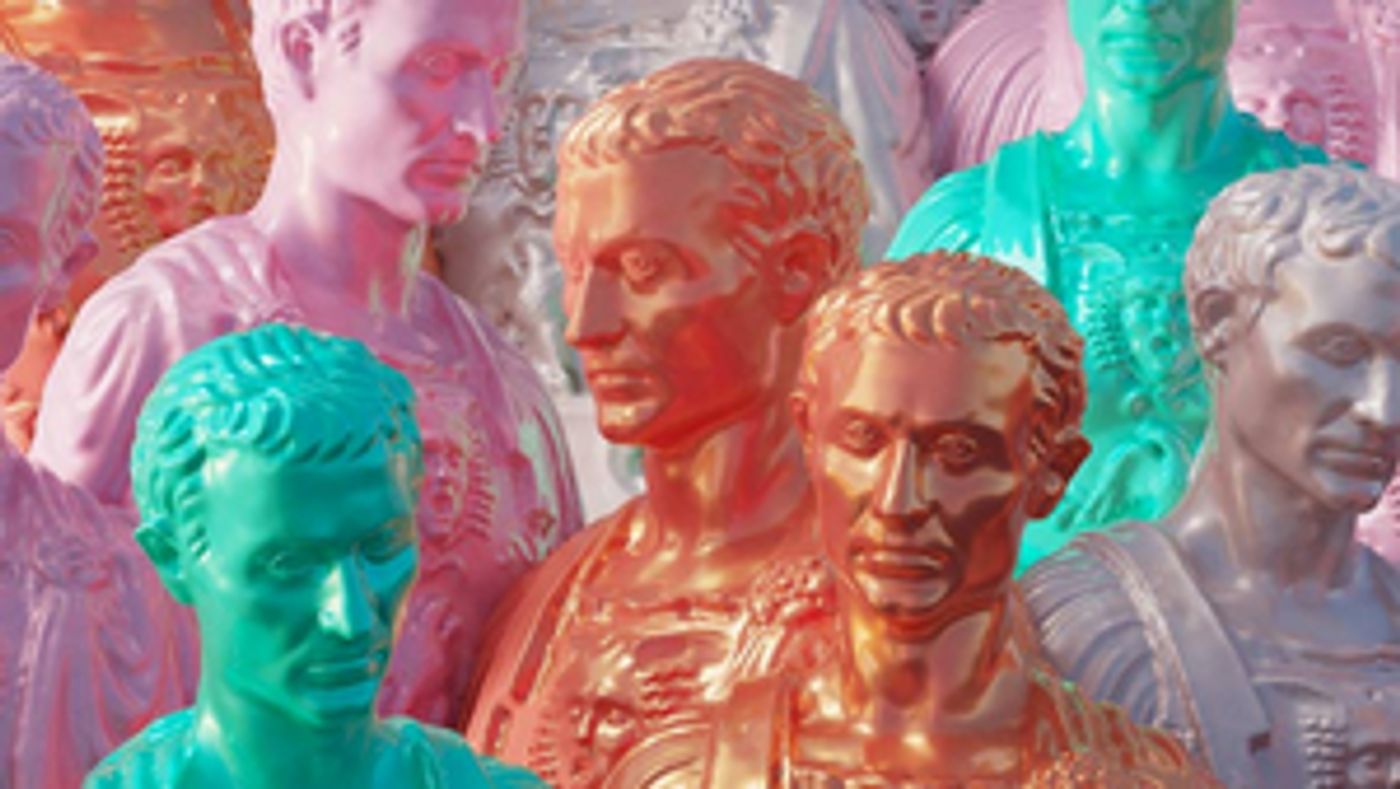Review: Shakespeare's JULIUS CAESAR Is The Latest Work To Get The Stage And Live Screen Treatment In Kip Williams' New Adaptation For Sydney Theatre Company
JULIUS CAESAR

Friday 19th November 2021, 7:30pm, Wharf 1 Theatre
Kip Williams' (Director) new imagining of William Shakespeare's tale of Ancient Roman power plays reinforces that politics hasn't really changed as the 21st century is layered over the classic tragedy of JULIUS CAESAR. Utilizing the recently refurbished black box space of the Wharf 1 Theatre, the audience is transported through time as they become more immersed in the story as past and present collide.
While Shakespeare's original work has a multitude of characters, this modern interpretation focuses on the key characters, presented by Geraldine Hakewill, Ewan Leslie and Zahara Newman, on a white raised platform in the centre of the Wharf 1 theatre. The 'in-the-round' stage is initially dominated by box of 4 large LED panels that eventually rises to allow clear sight across the stage while text and images are broadcast to the screens. Elizabeth Gadsby's clean design is further reinforced with the 'simplicity' of the costuming that effortlessly eases between 'street' clothes that indicate the classically attired characters introduced on the screens with simple swathe of a similarly coloured sweater or addition of a corresponding adornment. The addition or removal of the item allows the performer to transition between the characters with little fanfare before the story delves deeper into Ancient History and casual clothes make way for traditional togas before parallels with modern politics are made. Amelia Lever Davidson's lighting employs a variety of styles from centring the focus under the elevated cube to including the audience in the plot line. Similarly, Stefan Gregory's sound design immerses the audience in the marketplace crowd as the cries of the citizens are heard from all directions.
In this production of JULIUS CAESAR, Kip Williams continues his penchant for employing live streaming of video footage in his works . While THE PICTURE OF DORIAN GRAY engaged some use of personal electronic devices that were still connected by wires to relay footage, his engagement with the technology now has the electronically captured work delivered from completely mobile, mobile phones, drawing on the understanding of the propensity of modern people to feel they need to live stream everything about the world around them. Working with David Bergman's video design, the ability for the message to be distorted through the selection of the camera angle and zooming in is reinforced as images are layered and distorted on the overhead screens. Additional hidden cameras allow for scenes that represent more 'official' broadcasts. As with THE PICTURE OF DORIAN GRAY, pre-recorded footage is also used to allow the images of the three performers to be layered to show bigger crowds and the modern phenomenon of "Zoom" meetings is naturally also referenced.
With the aid of text captions setting the scenes or announcing characters, the tale of Julius Caesar's demise and the following struggle for power plays out with clarity. Hakewill, Leslie and Newman deliver strong performances that each convey the power of the respective characters they inhabit, from Caesar himself (Leslie), to Marcus Brutus (Newman), Cassius (Leslie), Casca (Hakewill), Lepidus (Newman), Octavius (Leslie) and Mark Antony (Hakewill). Shakespeare's great speeches have been retained while Mark Antony's oration at Caesar's marketplace funeral evolves to a modern makeover linking the classic work to contemporary political dog-and-pony shows that rally the masses which Hakewill delivers with compelling persuasion.
As with earlier works that have employed live video, at times the use of technology can prove a distraction if not also causing a degree of motion sickness as the handheld phones provide less stability than the earlier tripod mounted cameras. The lag in image to sound also affects the experience though if the focus remains predominantly on the live performers the work remains powerful enough without the benefit of the message manipulation of camera close ups. If you are more inclined to want to engage with the electronic images, the seats further back, and therefore higher would also be beneficial to see both screen and stage without too much movement and refocusing.
For those wanting to experience Shakespeare who may be reticent to engage with a classically staged work, this new styling and adaptation will be a good option as it retains much of Shakespeare's words whilst making the work relevant in the modern world.
https://www.sydneytheatre.com.au/whats-on/productions/2021/julius-caesar
Videos

